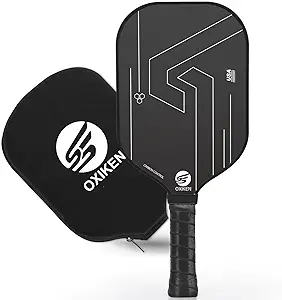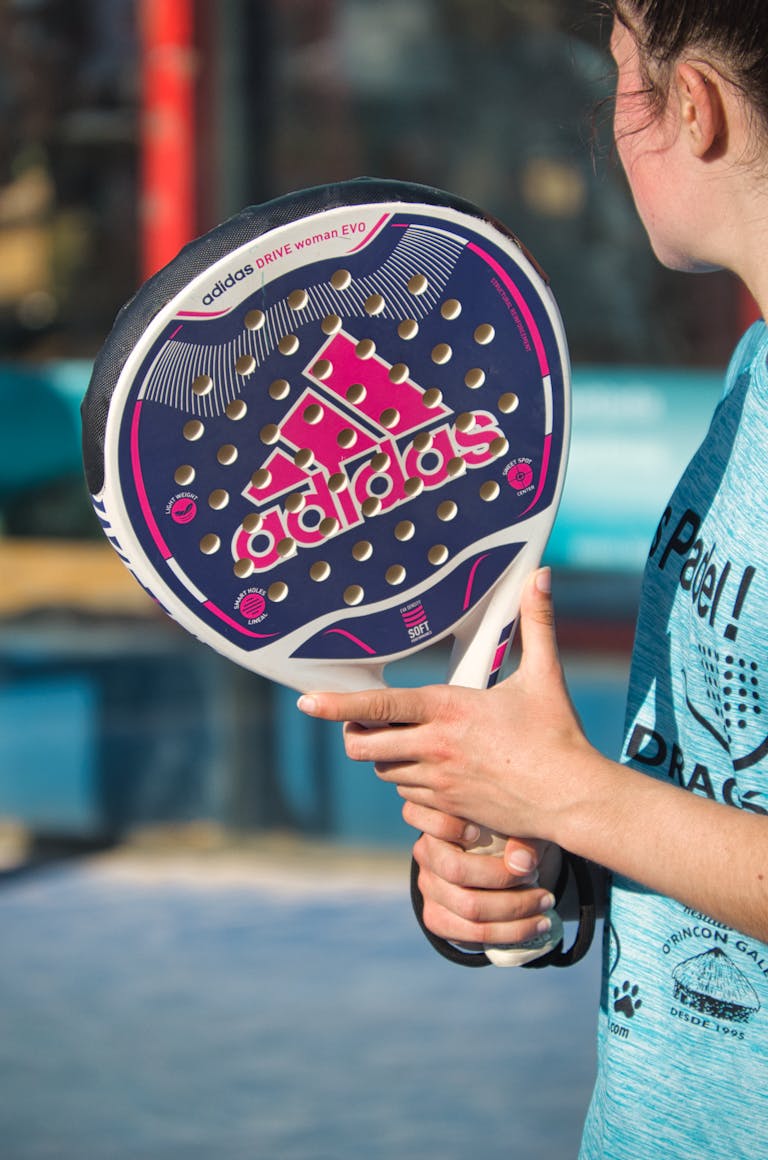Why is it called Pickleball? It is named after the family who invented it back in 1965, oh, and their dog named Pickles!
The game began as an effort to occupy the children and combined elements of tennis, badminton and ping pong.
As the years went by, even more folks caught on to the game for its straightforward guidelines and instant implementation.

To demonstrate how the moniker became attached and why it suits the sport, the following sections detail its origins and initial development.
What is Pickleball?
Pickleball is a paddle sport that combines elements of tennis, badminton and ping-pong. It dates back to 1965 invented by Joel Pritchard, Bill Bell, and Barney McCallum. It utilizes a tennis-like court and net, but it’s scale and equipment is distinct.
Players volley a whiffle ball like projectile using solid paddles trying to win points against their opponents. What makes pickleball so cool is how social it is and that it can be played by all ages and skill levels. The name ‘pickleball’ is connected to the Pritchard family dog, Pickles, but this tale is occasionally disputed.
The sport is known for being inclusive, easy to learn with an emphasis on fun and community.
The Court
Pickleball courts are 13.4m long and 6.1m wide. Which makes it smaller than tennis, but bigger than ping pong. One distinctive feature is the non-volley zone, or kitchen, a 2-meter area on both sides of the net in which players cannot volley the ball.
Courts may be indoors or outdoors. Indoor courts are typically wood or synthetic, and outdoor courts are most commonly concrete or asphalt. Outdoor surfaces are able to withstand weather and offer excellent grip.
It has baseline, sidelines and centerlines on the court. The net is hung at 0.91 m (3 ft) at the sides and 0.86 m (2.95 ft) in the center. Clear line markings allow players to know the service areas and the non-volley zone.
Regular upkeep is key. Sweeping the court and inspecting for cracks maintains play safe and slick.
The Equipment
Pickleball paddles can be wooden, composite, or graphite. Wood paddles are heavier and more affordable, whereas composite and graphite paddles are lighter and provide greater control.
The pickleball is a perforated plastic ball. It’s light, typically weighing 22–26 grams or so. The holes minimize wind drag and permit accurate shots.
| Paddle Type | Material | Average Weight (g) | Typical Size (cm) |
|---|---|---|---|
| Wood | Maple | 220–255 | 40 x 20 |
| Composite | Fiberglass | 180–215 | 40 x 20 |
| Graphite | Graphite | 170–205 | 40 x 20 |
Proper shoes are the way to go. Court shoes with non-marking soles provide both grip and support which is why they minimize the risk of slips and injuries.
The Objective
The objective is to accumulate points by winning rallies, in singles or doubles play. Points are secured when the opposing player is unable to return the ball or commits a fault.
Points can be scored by the serving side only. Games are typically played to 11, and you must win by 2.
- Communicate clearly to avoid confusion.
- Cover your half of the court well.
- Call shots early to help your partner.
- Back each other up when possible.
Great serving and returning set the tone. The serve needs to be underhand and fall within the appropriate service zone. A good return maintains the ping-pong match and may turn the tide.
The Name’s Origin
The term ‘pickleball’ is whimsical and fun, yet the actual source of the name is a combination of anecdotes and controversy surrounding this popular sport. The game’s origin dates back to the mid 1960s when Joel Pritchard and friends invented it as a family-friendly game, leading to the first pickleball championship. Eventually, two predominant tales developed about the origin of the game’s name, each capturing the jovial ethos at the center of pickleball and connecting back to the founders’ lives and the culture of the game.
1. The Pickle Boat Theory
Some believe the name pickleball comes from the term ‘pickle boat’ used in rowing. A pickle boat in a crew race consists of leftover rowers who didn’t make the main boats, much like how the game pickleball was created using leftover elements from tennis, badminton, and ping-pong. This unique combination reflects the spirit of the popular sport, which has gained immense popularity in the United States and beyond.
Pritchard and friends knew the term, and it fit the odd, hybrid nature of their new game. The nautical theme brings a rowdy sense of fun in-line with the relaxed vibes of pickleball. Even so, this tale is disputed. Others, including some historians and fans, insist the link is tenuous, citing the absence of hard evidence linking the nautical term to the game’s name.
Supporters of the pickleball story counter that the founders often referenced this quote, providing it with some validity. The ongoing debate about the origins of the name only adds to the charm of this enjoyable sport, captivating players and fans alike.
2. The Pickles the Dog Theory
Another common myth is that the game was named after Pickles, the Pritchards’ dog. In this story, Pickles was notorious for chasing loose balls during games, effectively making the dog a mascot. So it wouldn’t be odd to name the sport after a favorite pet.
There’s an endearing humor to this tale, matching the congenial reputation of pickleball. There’s a crucial piece that line of thinking misses. A study including that of USA Pickleball Pickles, the dog was born in 1968, three years following the game’s initial play and christening.
This timeline makes it improbable that the dog fueled the name, but hey, the story persists and contributes to the game’s allure.
3. The Official Story
The founders themselves have provided an official account over the years. Joel Pritchard and his buddies said they went with “pickleball” because they thought it was catchy, fun and distinct from other sports names. Authors such as Jennifer Lucore and Beverly Youngren, who chronicled the sport’s history, note distinctiveness and memorable were important.
Competing tales have sparked spirited discussion in the pickleball world and beyond. These stories — dog or boat — are now part of the lore and character of the game. The tales themselves demonstrate the ways names can influence how we view and discuss sports and contribute to a collective mythology.
The Game’s Genesis
Pickleball was initially formed during the summer of 1965 when families were seeking out low-effort activities to enjoy. The setting was Bainbridge Island, Washington, where Joel Pritchard, Bill Bell and Barney McCallum conceived it while seeking a game everyone in the family could play – young or old. They reinvented a badminton court as the new arena for excitement, paddles fashioned from old sweet tin cans, a styrene whiffle ball.
The original net, standing 1.5 meters high, was soon dropped down to around 0.9 meters, thus opening it up to being played in a different way. This move aided in making a game that anyone could play, providing for a mix of speed, skill and interaction.
Pickleball’s formative years were inclusive and fun—not uber competitive. We built the game for parents, kids and friends to all play together. It immediately caught on as a game with simple rules and little equipment requirements.
By the early ’70s, however, the game was already escaping the family yard, as it became a favourite casual activity at community events and get-togethers. Its ground-up expansion was driven by that it was compact, and could be scaled to various ages and skill levels.

The founders helped to define the sport’s rules and structure. Joel Pritchard and his friends Bill Bell and Barney McCallum collaborated to finesse the game, borrowing from tennis, badminton, and table tennis. They maintained the sense of collaboration, tweaking the rules as needed to keep play easily going and fun.
They stuck around, too — backing the construction of the first official court in 1967 and facilitating local play, keeping the game’s original community spirit alive.
The game’s title has been controversial. Others claim it was named after the “pickle boat” — a scull with a mish-mash of leftover rowers, just as the game was stitched together from other sports. Others blame the Pritchard family dog, Pickles, except we know Pickles was born three years after the game’s invention, so it’s more likely the boat story.
Anyway, the name’s just been part of the game’s charm and made it distinctive as it gained traction.
Bainbridge Island
Bainbridge Island is the birthplace of pickleball. Its tight-knit community was the bedrock on which the sport was incubated. Neighbors united, exchanging tips and equipment to make the game evolve past the backyard brinkmanship.
Early grassroots events on the island, like family tournaments and neighborhood matches, were critical. These meetings didn’t just promote awareness, they created a community of members. The island’s culture of community and play helped mold pickleball into a friendly, accessible sport.
Our inaugural court – constructed in Bob O’Brian’s backyard – became emblematic of this communal spirit. It paved the way for expansion as additional locals came on board, rendering pickleball an integral part of the island’s communal existence.
The Founders
Joel Pritchard, Bill Bell and Barney McCallum are notable as the key founders. They were inspired to design a new game for all ages, combining elements of other racket sports.
Their method: collaborative, tinkering with gear and regulations until it clicked. This collaboration was critical in establishing the skeleton of the game.
Even once the game took off, the founders remained engaged, nurturing new players and helping to grow the sport at both a local and regional level.
The Evolution
Pickleball’s unbelievable rise from backyard pastime to internationally recognized sport. Setting formal rules and holding its first tournament in 1976 turned it into organized play.
Leagues, tournaments started to pop up and they drew players from all walks of life. These helped the sport become legitimate and fostered growth into schools, rec centers and clubs.
Community efforts have been central to making the game accessible:
- Programs for youth and seniors
- Training workshops for beginners
- Adapted rules for people with disabilities
- Outreach to schools and community groups
Beyond the Name
Pickleball’s name is unique in the sporting world, establishing a mood for an unconventional game. Unlike tennis or badminton, the name connotes playful and irreverent humor, which influences how players and fans perceive the popular sport. This playful identity, along with the culture it inspires, is part of why the game pickleball continues to attract new players, of all ages and backgrounds.
A Quirky Identity
Pickleball is played with a smooth-faced paddle and a hollow, perforated plastic ball, producing a sharp pop. The net is 86 centimeters, shorter than a tennis net, but taller than a table tennis barrier. Matches can be singles or doubles, and the rules are straightforward—bounce the ball to each other until one misses. The popularity of the game pickleball has surged, leading to the construction of new pickleball courts across the country.
Unlike its more buttoned-up cousins in the racquet sports world, pickleball’s offbeat personality bleeds through in the manner in which players congregate. Tournaments may be competitive, but it’s a lot of laughing and good-natured ribbing. Innovative customs flash up at matches.
Players could sport flashy socks or novelty shirts, or name their teams hilarious names. This laid back arrangement makes it open to everyone, and multi-generational groups playing together is not unusual. They’ll tell you about making new friends or taking up the sport for a breath-of-fresh-air workout.
It’s this laidback attitude that makes Why is it called Pickleball seem so accessible. After all, the eccentric personality doesn’t merely differentiate the game, it makes it fun. They say the name and the nature go hand-in-hand, making what could be just another sport into something special.
Marketing Appeal for Why is it called Pickleball
Pickleball, isn’t that a marketing dream of a name. It’s catchy, quirky, and memorable, so it lodges itself in people’s memories. Therefore, clubs and brands incorporate it into logos, event names and even merchandise, which helps make the sport instantly recognizable worldwide.
Businesses hawk paddles and balls emblazoned with jovial logos, and advertisements thrive on the name’s goofiness. The whimsical design attracts a broad cross-section of the population. Young adults, veteran players, families and even the ‘non-sports jawns’ often find pickleball to be less intimidating than traditional sports.
As a result, the sport has experienced explosive growth there are close to 20 million players in the US alone, and the figures continue to rise. Media coverage, from news to social media, has energized the sport’s exposure, highlighting games and events in Canada, Australia, India and beyond.
Community Culture for Why is it called Pickleball
Pickleball is not just a game, it’s a community. Clubs and local organizations tie players together, providing a home for rookies and veterans to blend. These communities organize exhibition matches, training clinics and social events.
While most players claim they’ve gained much more than just fitness including lifelong friends, epic post-game group chats, and handed-down PB&Js. The community is a huge attraction. Teens to retirees, every age of player shares a bond on the court.
This casual environment fosters mentoring and collaboration, and the environment tends to be collegial instead of cutthroat. Injury rates, particularly among those over 60, have risen, but the camaraderie tends to promote safe play and tip sharing.
Community-building is evident in inclusive events. Here’s a checklist of typical activities:
- Open play days for all skill levels
- Mixed-age or family tournaments
- Volunteer-led beginner clinics
- Charity matches and fundraisers
- Social gatherings like picnics or potlucks
These events ensure that all of us get to participate, regardless of experience or background.
The Name’s Legacy
The legacy behind the name “Why is it called Pickleball” is more than just a quirk. The sport’s name comes from the summer of 1965, when its inventors, among them Joan Pritchard, picked ‘pickleball,’ after the ‘pickle boat’ in rowing, a vessel comprised of leftover rowers. Even with the facts, contention over the name persisted.
Barney McCallum, one of the sport’s founders, thought the game paid tribute to the family dog Pickles, but records indicate Pickles was born three years after the game was named. In fact, Joan Pritchard invented the term and the family dog was subsequently named for the game. Although the back story has caused some confusion, the name ‘pickleball’ caught on and became associated with the game’s whimsical spirit and wide-reaching accessibility.
Today, it is a testament to camaraderie and enjoyment in athleticism.
Global Recognition
Why is it called Pickleball ascent isn’t just a hometown story. It is now experiencing swift expansion throughout Europe, Asia, and South America. Global entities like the International Federation of Pickleball assist in establishing rules and facilitating play at a global level.
More global tournaments pull players from across shores and skill levels. The unusual name “pickleball” transcends language barriers and injects a little whimsy, allowing players from other cultures to adopt the game with ease. In certain areas, the name actually generates intrigue, attracting new athletes interested in trying out the game with the odd moniker.
Brand Identity
The name Why is it called Pickleball is the heart of the sport’s brand. Clubs and associations, and even some gear makers, incorporate the word in logos, team shirts, and official gear. The name shows up on paddles and balls and event banners, creating a potent brand.
Branding consistency fuels the sport’s growth. It helps new players discover tournaments and get involved. A name like “pickleball” separate from the paddle sports family provides merchandise with an approachable, fun feel that makes people want to try the sport, if they’re shopping for a paddle or browsing a tournament online.
| State | Official Recognition | Year |
|---|---|---|
| Washington | State Sport | 2022 |
| Arizona | State Sport | 2023 |
| Minnesota | State Sport | 2024 |
Enduring Charm
‘Why is it called Pickleball’ still has the magic, after all these years. The name’s jokey vibe helps put games in a mood, where they seem less serious and more accessible. For most, it’s a name that conjures up warm recollections of lazy summer days and neighborly competition.
There’s a certain nostalgia here, attached to its quirky yet welcoming moniker, that has contributed to its longevity. It’s a legacy name that serves as a reminder that sport can be fun regardless of age or experience, assisting pickleball in maintaining its position as a beloved choice for both new and experienced players.
Future of the Name
I love the name ‘Why is it called Pickleball’, it’s so different from any other sport. While its origin, whether it was inspired by a family dog named Pickles or another story, remains disputed, the term has become inextricable from the game conceived in 1965 by Joel Pritchard and pals. As the game of Why is it called Pickleball takes off globally, we wonder how the oddball name will survive against the backdrop of its increasing professionalism and global reach.
Professionalism
Pickleball is transitioning from backyard courts to the world stage, and its breakout growth, particularly in the U.S., has propelled participation to an estimated 19.8 million players for 2024. With the introduction of professional leagues like the PPA Tour Asia and MLP Asia, a new age of elite play and competition is emerging, which could lead to the establishment of new pickleball courts across the nation.
As the sport gains seriousness, the question ‘Why is it called Pickleball’ faces scrutiny. Some worry that its whimsical nature could undermine the sport’s pursuit of recognition and respect. For many enthusiasts, the name serves as a nostalgic reminder of its origins, a blend of fun and community spirit that is now becoming a popular sport in its own right.
The trick is maintaining this ‘play’ identity once the competition heats up. A question that still remains, though, is whether the sport’s identity should change alongside its professional image. Already, some players fret that an emphasis on competition risks eclipsing the welcoming, nonelitist culture that had made pickleball appealing in the first place.
Modern Branding for Why is it called Pickleball
Branding is central to the way pickleball is perceived by audiences around the world. Marketers today leverage social and digital campaigns to attract fresh players, particularly the young generations who define the trends. These initiatives ensure that even as the sport evolves, the name pickleball remains at the core of its branding, especially with the rise of new pickleball courts.
The proliferation of online communities and influencers has catapulted the sport past its initial audience. Contemporary marketing emphasizes the enjoyable and competitive aspects of the sport, attracting diverse athletes to the outdoor Why is it called Pickleball court. Engaging youth is particularly critical, as younger fans fuel both passion and growth over time.
By mixing new branding with the sport’s old name, organizers stay ahead of the name game. It is this tension between tradition and innovation which helps pickleball differentiate itself in a congested sports marketplace.
Lasting Impact
Why is it called Pickleball name has become a cultural touchstone in the sports world, making it a popular sport among enthusiasts. Its silly name has spawned imitators and contributed to the casual gaming ecosystem, especially with the rise of new pickleball courts across the country. The game is sure to continue expanding and inspiring new generations for years to come, propelled by its catchy name and approachable outdoor play.

Saving both Why is it called Pickleball history and quirky identity is important. While the sport navigates issues like noise and court demand, its narrative and culture continue to be essential to its attractiveness. The name pickleball connects to its heritage and an aspiration to its destiny, aligning with the values of the united states amateur pickleball association.
Final Thoughts on Why is it called Pickleball
Why is it called Pickleball quirky name came from actual people and an actual moment a family, a dog and some fun. It’s a tale that illustrates how sports can bloom from the most humble of seeds. A name can catch, even if it sounds nutty at first. Today, people across the globe play pickleball on numerous courts and in multiple parks.
The name is unique and memorable. To find out or give it a go, visit a club near you or view a match online. They’re the kind of stories that make the games we play, and the names we use. Pickleball proves that a game with a playful origin can turn into a huge, enduring game.
Frequently Asked Questions
Why is it called pickleball?
Why is it called pickleball? It could be due to the family dog of the creators named Pickles or because of a ‘pickle boat’ associated with the game pickleball. Both tales are widely circulated, but the true origin remains disputed.
What is the story behind the name pickleball?
The game’s founders alternatively named it after their dog, Pickles, who would chase after errant pickleballs, or after “pickle boat,” a rowing term for a crew of leftovers. Both are well cited.
Who invented pickleball?
Pickleball, a popular sport created in 1965 by Joel Pritchard, has become a mainstay in the United States.
What is the meaning of “pickle boat” in pickleball’s origin?
A ‘pickle boat’ is a boat with a mixed crew in rowing. Because the game pickleball was perceived as a hybrid of sorts, this may have given rise to its potential namesake.
When did pickleball start becoming popular?
Pickleball, a popular sport founded in 1965, has exploded in popularity globally during the 21st century due to its easy rules and availability for outdoor play.
Is pickleball played worldwide?
Yeah, pickleball’s now played in lots of countries. Its simple rules and inexpensive equipment make it easy for people of all ages and walks of life to enjoy this popular sport.
Does the name pickleball affect its popularity?
The unusual moniker makes the game pickleball distinctive and appealing. It contributes to the sport’s enjoyable image, tempting more folks to give outdoor play a go.






